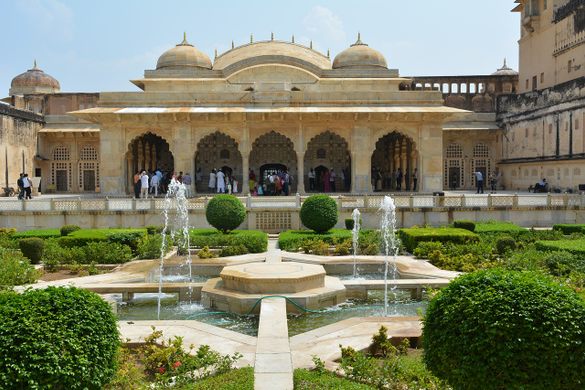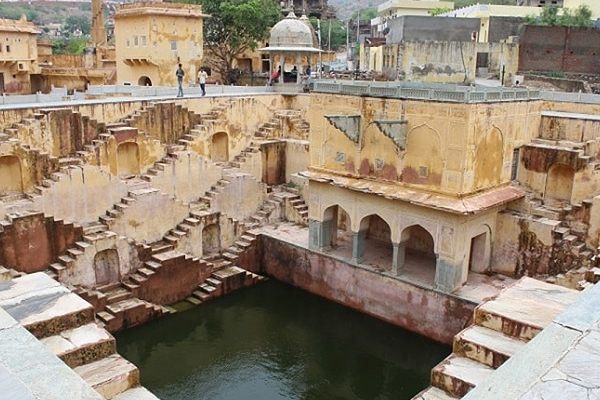Amber Fort
This opulent 16th-century Maharaja’s palace is a unique mix of Hindu and Muslim designs.
The resplendent Amber Fort sprawls along the top of a natural hill outside the city of Jaipur. Historically significant and architecturally stunning, Amber Fort (pronounced AH-meer) is a well-preserved monument from the glorious days of Rajput rule in Rajasthan.
The historic hill fort rises above the town of Amer (it is sometimes called Amer Fort), which was the capital of the Kuchwaha Rajputs from the 11th to the 18th century. Construction began in 1592 by Maharaja Man Singh, a commander in the army of the Mughal emperor Akbar. In shades of honey and rose stone, white marble and gilt decor, Amber Fort is more of a palace than a fortress, and the design is a unique mix of Hindu and Muslim styles.
A long, steep climb up to the fort takes visitors into a huge courtyard, Jaleb Chowk. Once through the ticket gate, there’s a lot to see in the palace complex as you move from one courtyard to another, each leading to more private and opulent chambers, plus temples, gardens, and terraces. The first is the many-pillared Diwan-i-Am, the Hall of Public Audience. From there, you enter through the beautifully painted Ganesh Pol (gate) to the private inner apartments of the fort.
The Diwan-i-Khas includes an ornamental garden and the dazzling Sheesh Mahal, Hall of Mirrors. The walls of the Sheesh Mahal are covered in an intricate mosaic of shards of mirror and colored glass. It’s one of the treasures of Amber Fort, astounding visitors with the beauty of the cut Belgian glass.
Apparently, this room was made by the Maharaja so that the Maharani (queen) could see the stars at night, as she was not allowed to sleep in the open. When candles are lit at night, the room seems to reflect thousands of stars from the walls and ceiling.
Other inner rooms include the Jal Mandir, or Hall of Victory, which features carved marble panels a mirrored ceiling, and expansive views over the ramparts of the fort. The Sukh Niwas, the Hall of Pleasure, is a marble room that was cleverly cooled with water. Here, the Maharaja reportedly relaxed with his ladies.
The oldest part of the fort, completed in 1599, includes the Palace of Man Singh and the zenana, women’s quarters. In the centre of the zenana is a pavilion, and the wives’ rooms were ranged around the courtyard. It’s a splendid and well-preserved fort and well worth a lengthy visit.
Know Before You Go
The fort is open every day from 8 a.m. to 6 p.m. Foreign ticket price is 200 rupees, 100 rupees for students. Domestic ticket price 25 rupees, 10 rupees for seniors, students. The evening Sound and Light Show is spectacular.
You can walk, take a jeep, or opt for an elephant ride up the hill to the fort (though animal lovers will not want to ride the elephants as they look hot and weary). Elephant rides (not recommended) are 900 rupees for 2 people.
Amber Fort is a UNESCO World Heritage site, part of a group of six hill forts in Rajasthan.




































Follow us on Twitter to get the latest on the world's hidden wonders.
Like us on Facebook to get the latest on the world's hidden wonders.
Follow us on Twitter Like us on Facebook